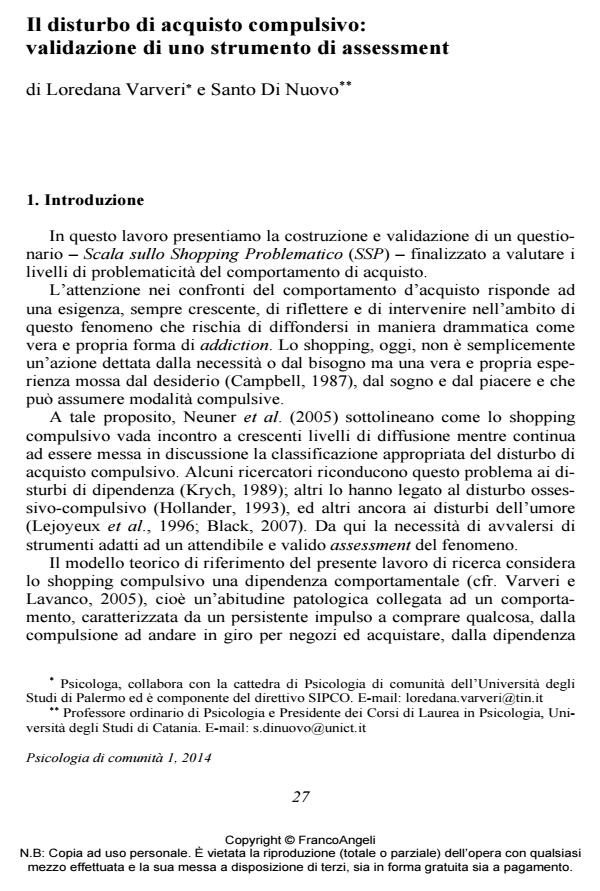Compulsive buying disorder: validation of an assessment questionnaire
Journal title PSICOLOGIA DI COMUNITA’
Author/s Loredana Varveri, Santo Di Nuovo
Publishing Year 2014 Issue 2014/1
Language Italian Pages 19 P. 27-45 File size 110 KB
DOI 10.3280/PSC2014-001003
DOI is like a bar code for intellectual property: to have more infomation
click here
Below, you can see the article first page
If you want to buy this article in PDF format, you can do it, following the instructions to buy download credits

FrancoAngeli is member of Publishers International Linking Association, Inc (PILA), a not-for-profit association which run the CrossRef service enabling links to and from online scholarly content.
The article presents the construction and results of a study aimed to validate a questionnaire (Problematic Shopping Scale, PSS) devised to assess buying behavior. The questionnaire, in its final form, is composed of 22 item and shows good internal consistency. The factor analysis shows the existence of two main dimensions accounting for 44.84% of the total variance. The study confirms the reliability and validity of the instrument, and its consistency with the model, therefore it can be considered a good psychometric tool suitable to assess problematic buying behavior. Also, it is an instrument easy to administer because require no special training, and it is useful for epidemiological studies and in a screening procedure to be followed by a scoping phase.
Keywords: Compulsive shopping, addiction, assessment, reliability, validation, Problematic Shopping Scale.
Loredana Varveri, Santo Di Nuovo, Il disturbo di acquisto compulsivo: validazione di uno strumento di assessment in "PSICOLOGIA DI COMUNITA’" 1/2014, pp 27-45, DOI: 10.3280/PSC2014-001003